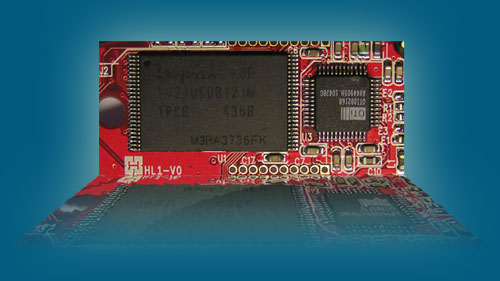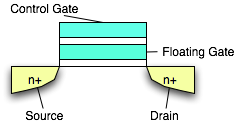Archive for the ‘Makes Sense’ Category
Understanding the New Microsoft Office Ribbon
Posted by: Jordan in Makes Sense, Video Guide on March 28th, 2009

Youtube has just lunched a new section on their website dedicated to learning! Existing Youtube videos from colleges and universities as well as other generally educational videos are being indexed here. This is an easy way to find many great tutorials, including the one shared below that can help demystify the new look of Microsoft Office 2007. Read the rest of this entry »
How Does NAND Flash Memory Work?
Posted by: Jordan in Makes Sense on January 30th, 2009

NAND Flash Memory (left), Microcontroller (right).
How many times have you been caught off guard by what should be a relatively simple question? “My new flash drive has an insane capacity! How does NAND work anyways?”, I was asked by a friend yesterday. So I blacked out and when I came to I remembered ending my reply with “and ya, I think something like that”. No, it wasn’t that bad but clearly I needed to brush up on the old NAND-cabulary.
How NAND flash Works
On a NAND chip each bit (0 or 1, on or off) is stored physically by a specially designed transistor called a floating gate. The floating gate is electrically isolated from all other components by a layer of oxide. Electrically isolating the floating gate gives NAND flash the most important property that we know and love: data retention without power! (This is also known as non-volatile storage because voltage isn’t required for the memory to maintain its state.)
 When the state of the floating gate needs to be changed it’s time for some physics. Fowler-Nordeim tunneling is the name of the black box of physics that creates an electrical tunnel from a control gate to the floating gate. Via this tunnel the contents of the floating gate (0 or 1) can be read and altered. In your USB drive, Solid State Drive, iPod, or whatever all this work of reading and writing is handled by a separate microcontroller.
When the state of the floating gate needs to be changed it’s time for some physics. Fowler-Nordeim tunneling is the name of the black box of physics that creates an electrical tunnel from a control gate to the floating gate. Via this tunnel the contents of the floating gate (0 or 1) can be read and altered. In your USB drive, Solid State Drive, iPod, or whatever all this work of reading and writing is handled by a separate microcontroller.
What Does NAND Mean?
NAND is not an abbreviation or an acronym. It’s a portmanteau created by combining the word “NOT” with “AND”.
N(OT) + AND = NAND
If you’re thinking this looks like a boolean test you’re right. The result of a NAND test is always true unless both inputs are true.